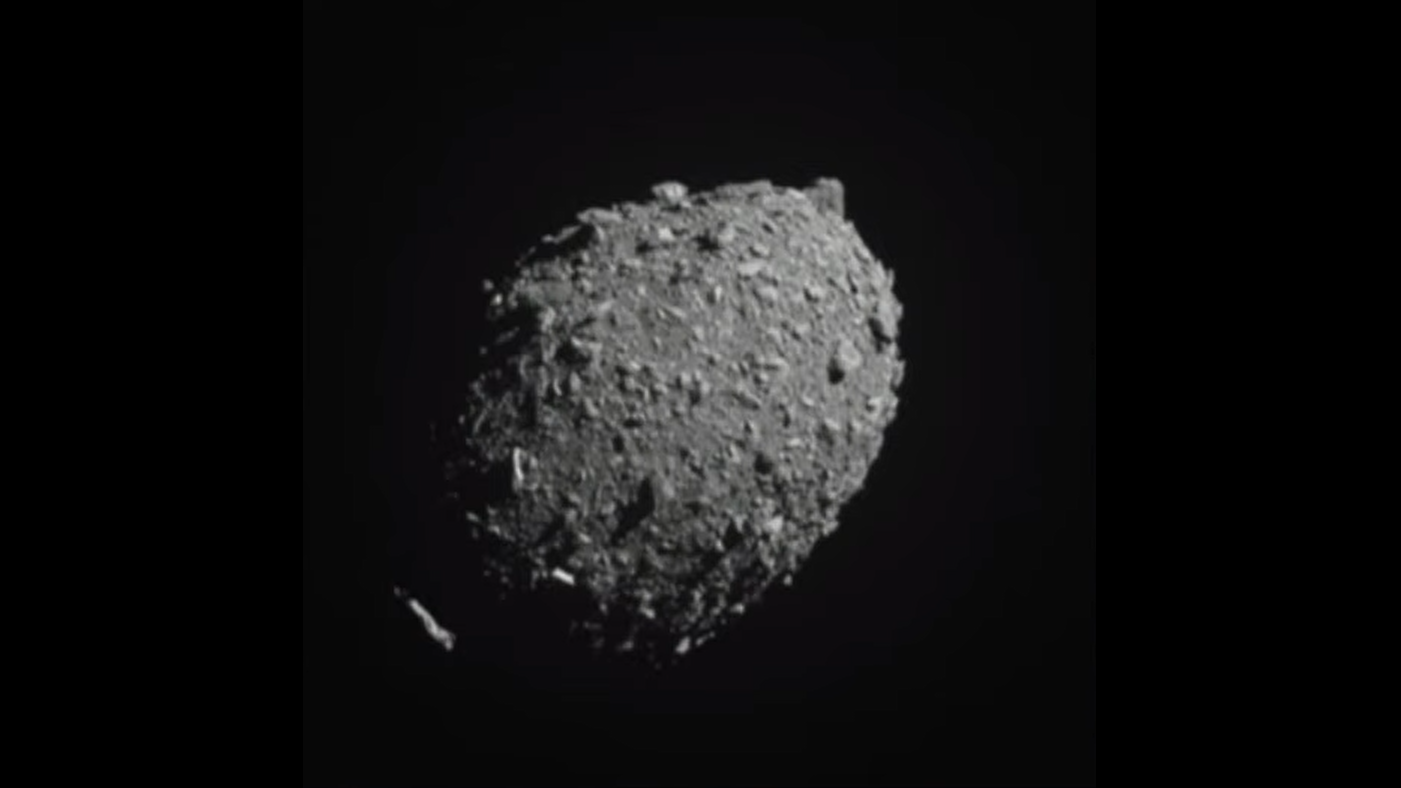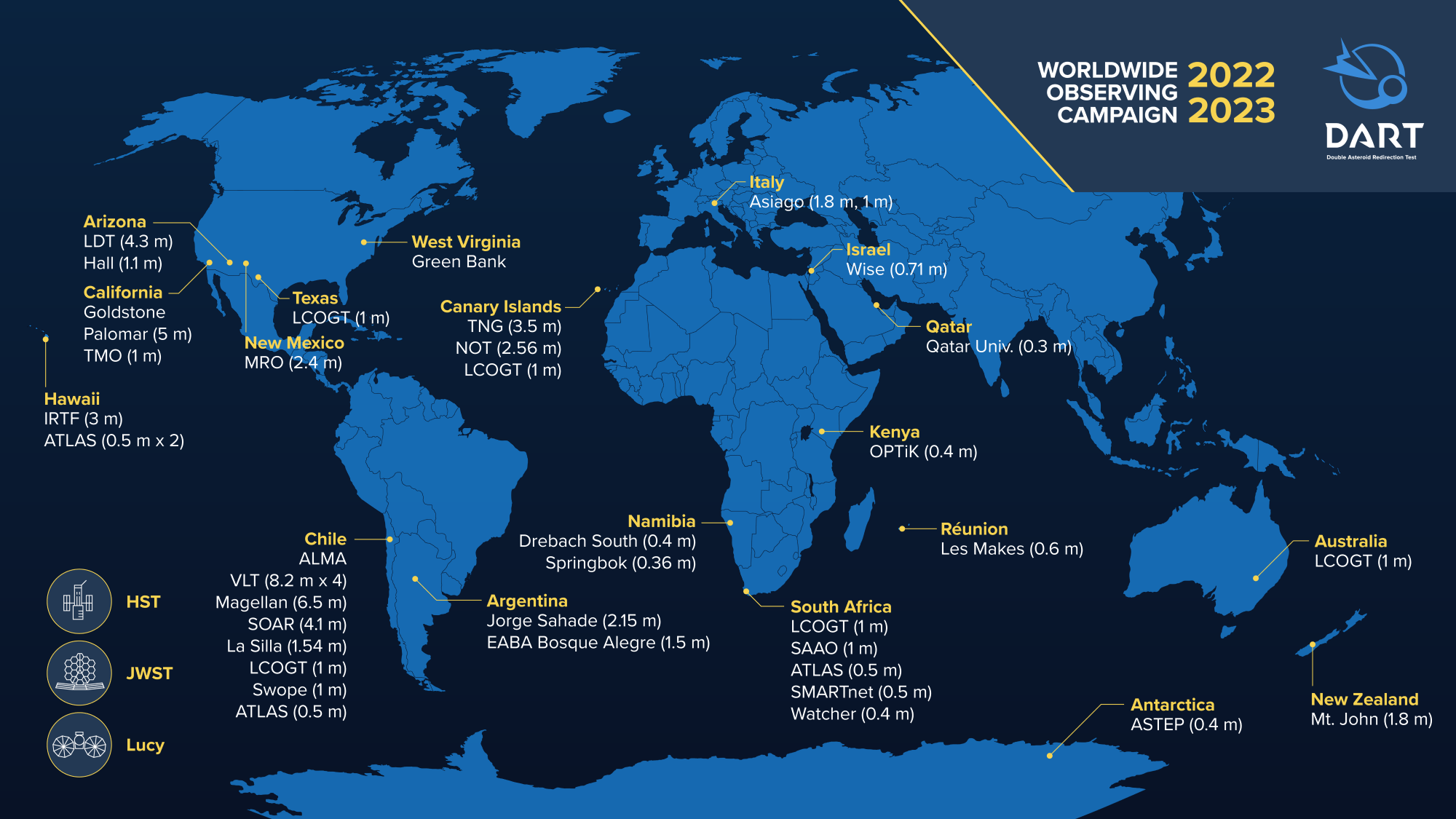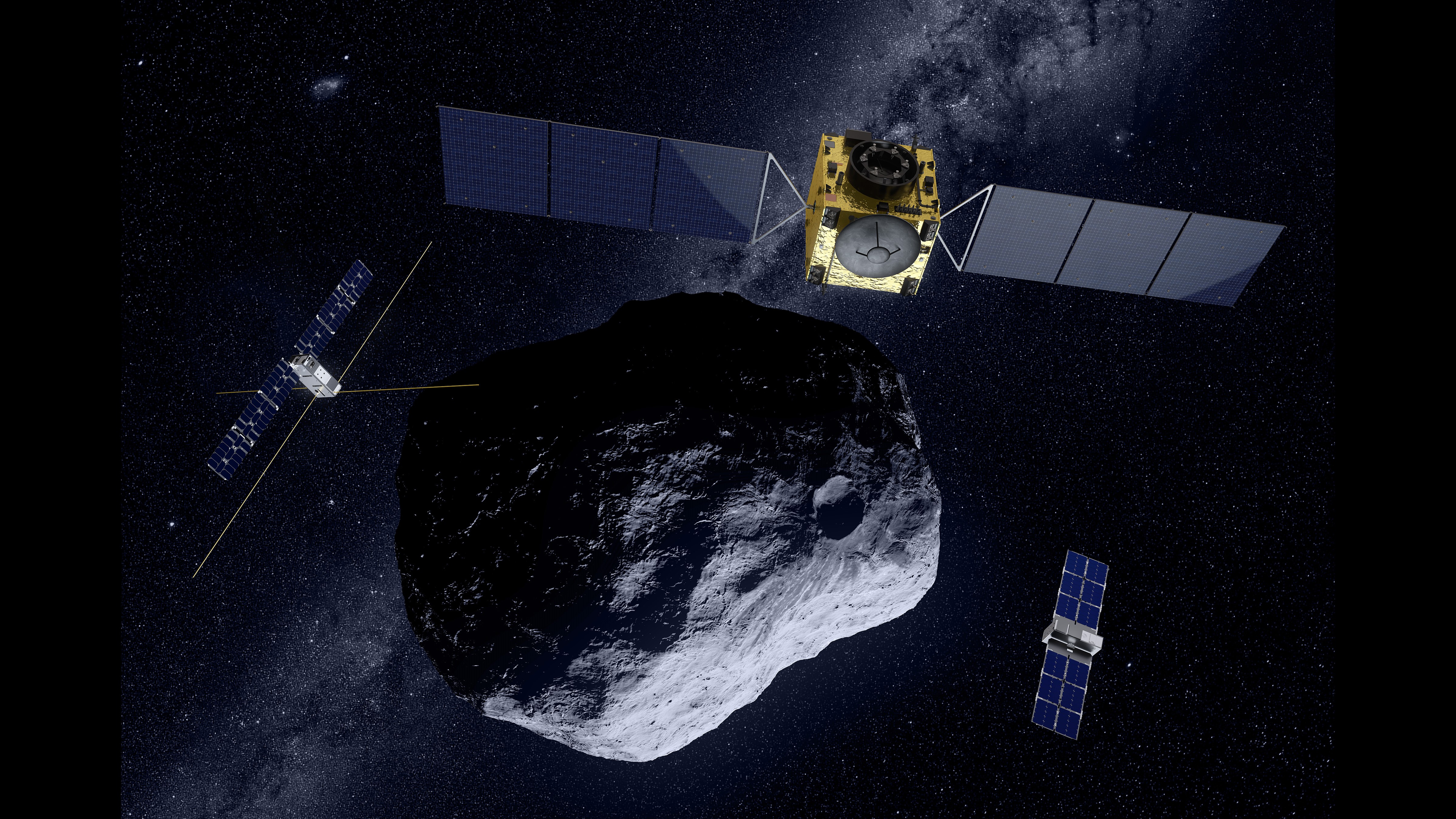After DART's incredible asteroid impact, the science is only beginning

NASA's DART mission has successfully slammed into Dimorphos, obliterating the spacecraft and giving the asteroid an almighty whack that scientists hope has altered its orbit around its larger companion and proven that we have the ability to deflect incoming hazardous asteroids.
Mission over? Not by a long shot!
Now that DART has done its job and crashed into its asteroid target, astronomers hope to understand how much the impact deflected Dimorphos by, as well as learning more about Dimorphos' interior structure and composition to give a complete picture of what it takes to move an asteroid.
"We are just at the beginning," Patrick Michel, a planetary scientist at CNRS, the French National Center for Scientific Research, told Space.com. Michel is the principal investigator of the European Space Agency's Hera mission, which will launch in 2024 and reach Dimorphos and the larger asteroid it orbits, Didymos in 2026 to view the aftermath of DART's sacrifice.
Related: 8 ways to stop an asteroid: Nuclear weapons, paint and Bruce Willis
Before Hera's arrival, there is still much work to be done. On Sept. 11, two weeks before the impact, DART deployed an Italian-led cubesat called the Light Italian Cubesat for Imaging of Asteroids (LICIACube). Lagging three minutes behind DART, it coasted past Dimorphos and watched the impact's immediate aftermath. LICIACube saw and has been characterizing the composition of the ejecta plume of debris expelled from Dimorphos by the impact, but it will takes days, or even weeks, for the dust to quite literally settle and for Dimorphos to stabilize into its new orbit around Didymos. By then, LICIACube will be gone, headed off into deep space.
So therefore it falls to ground-based telescopes, as well as the Hubble and James Webb space telescopes, to follow what happens next.
Get the Space.com Newsletter
Breaking space news, the latest updates on rocket launches, skywatching events and more!
"We recognized early in our discussion about the mission that we needed the ability to quickly measure the deflection from the ground," Michel said.
These telescopes will be watching for the change in Dimorphos' orbit. Other than the Arecibo Observatory's radar observations in 2003 that were made when Didymos and Dimorphos came within 4.8 million miles (7.8 million kilometers) of Earth, our telescopes cannot resolve Didymos and Dimorphos as individual objects. That challenge comes because the space rocks are so small (2,600 and 660 feet, or 780 and 170 meters respectively), so close to one another (separated by about 0.6 miles, or 1 km, at least before the impact), and are so far away (6.6 million miles or 10.6 million km on Oct. 4).

But together, the two space rocks form what astronomers refer to as an "eclipsing binary." When one passes in front of the other, we see their combined light diminish, and the period of these brightness changes tells us the time it takes for Dimorphos to orbit around Didymos.
Before the impact, "Dimorphos orbited Didymos at only 19 centimeters per second," Michel said, or 7.5 inches per second. "So when we shot Dimorphos with the DART spacecraft moving at 6 kilometers per second [3.7 miles per second], the deflection was instantaneous."
The aim of DART's impact is to have nudged Dimorphos enough for its orbital period to have shortened by at least 73 seconds, and possibly more. That might not sound like much, considering that before the encounter with DART, Dimorphos orbited Didymos once every 11 hours and 55 minutes. But over multiple orbits, that 73-second-or-more difference will build up, affecting the timing of the eclipses as seen from Earth.
"LICIACube will tell us about the ejecta produced first, and then the ground-based observations will tell us the difference in the orbital period of Dimorphos around Didymos before and after the impact," Michel said.
However, with DART demolished, LICIACube in the distance and telescopes here at home too far away to see much beyond the change in orbit, there will still be many questions unanswered.
Key to understanding the success of the impact, and how we can apply its lessons to deflecting other asteroids, is how much momentum DART imparted on Dimorphos. LICIACube and Hera nail down the precise mass of Dimorphos, but scientists estimate it is 11 billion pounds (5 billion kilograms), which means that this giant lump of rock is carrying a lot of inertia despite its slow orbit. The momentum of the impact worked against this inertia.
However, it may be that not all the momentum transferred into Dimorphos' orbital trajectory. "We may get some component of the momentum going into Dimorphos' libration," Michel said.
Dimorphos is tidally locked to Didymos, much like the moon is tidally locked to Earth and therefore always shows the same face to us. However, because the moon orbits Earth on an elliptical and inclined orbit, rather than a circular orbit, the moon appears to rock in the sky over the course of a month. This is what astronomers called libration. Models suggest that the impact could have sent Dimorphos into a chaotic tumble, destabilizing its rotation and leading to the libration also becoming chaotic.
Another possibility is that some of the debris from the impact could end up on Didymos. The larger asteroid spins quite quickly, once every 2.26 hours, which is fast enough to be on the margin of breaking itself apart. Therefore the asteroid is expected to be an agglomeration of interplanetary rubble loosely held together by gravity. The accretion of debris from the impact would subtly alter Didymos' shape and hence its rotation.

This is all important because scientists need to model the impact and its consequences accurately if they hope to then apply this "kinetic impactor" approach to other astroids.
When Hera arrives in four years' time, it will be able to answer these questions. Furthermore, it will measure the diameter and depth of the crater, details that will also inform the accuracy of scientists' models.
"Hera will provide a much more complete and precise measurement of what occurred, particularly the exact composition, mass and strength of these two objects," Lindley Johnson, the director of NASA's Planetary Defense Coordination Office, told Space.com. "The Hera mission will do that for us in addition to doing pure additional science, since every one of these asteroids is going to be a little bit different, and it will add to our understanding of their overall characteristics."
Now that the impact has happened, it's a waiting game to find out just what effect DART has had on the Didymos–Dimorphos system. The simplest scenario is that Dimorphos will have been nudged into an orbital period a minute or two shorter than it had before, but otherwise be unshaken. However, other, more complex scenarios may also be playing out.
"The good thing is that we've done a lot of studies trying to predict all the crazy scenarios that could happen, so that when Hera arrives we are able to interpret what we see," Michel said. "It's very exciting because anything could have happened."
Follow Keith Cooper on Twitter @21stCenturySETI. Follow us on Twitter @Spacedotcom and on Facebook.
Join our Space Forums to keep talking space on the latest missions, night sky and more! And if you have a news tip, correction or comment, let us know at: community@space.com.

Keith Cooper is a freelance science journalist and editor in the United Kingdom, and has a degree in physics and astrophysics from the University of Manchester. He's the author of "The Contact Paradox: Challenging Our Assumptions in the Search for Extraterrestrial Intelligence" (Bloomsbury Sigma, 2020) and has written articles on astronomy, space, physics and astrobiology for a multitude of magazines and websites.









